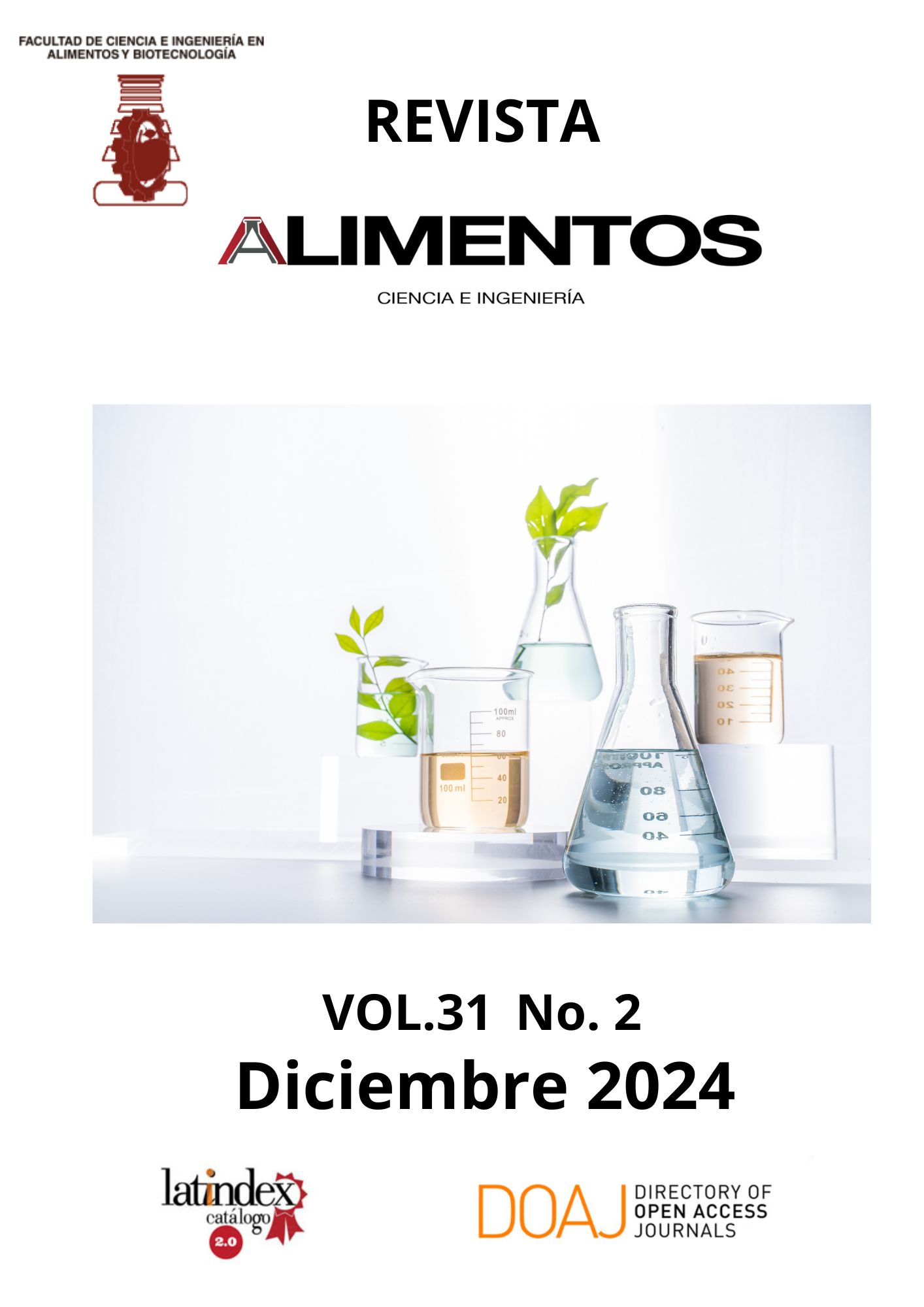Evaluation of the physicochemical stability of hard gelatin capsules containing lycopene microencapsulates
Main Article Content
Abstract
Three batches of hard gelatin capsules containing lycopene microencapsulates were evaluated for their physicochemical stability during storage at a temperature of 20 ± 5°C in amber glass bottles. The tests conducted included lycopene concentration, visual inspection, weight, and disintegration time, with a sampling frequency of 0, 3, 6, 9, and 12 months, according to the ICH Q1A guidelines. Based on the results of lycopene concentration over time, the stability period was determined. The antioxidant activity of the capsules was confirmed at the end of the study using the DPPH method. The capsules maintained their physical integrity, showing no adhesion, cracks, swelling, or color changes. The weight variation remained within the acceptable range of 90 to 110%, and the disintegration time remained under 45 minutes. The stability period varied from 12,53 to 14,24 months in the analyzed batches. The results obtained indicate that the capsules maintain their physical and chemical characteristics for 12 months, meeting the acceptance criteria established for solid oral dosage forms
Downloads
Article Details

This work is licensed under a Creative Commons Attribution-NonCommercial 4.0 International License.
Aquellos autores/as que tengan publicaciones con esta revista, aceptan los términos siguientes:
a. Los autores/as conservarán sus derechos de copiar y redistribuir el material, bajo los términos estipulados en la Licencia de reconocimiento, no comercial que permite a terceros compartir la obra bajo las siguientes condiciones:
Atribución: debe dar el crédito apropiado, proporcionar un enlace a la licencia e indicar si se realizaron cambios. Puede hacerlo de cualquier manera razonable, pero no de ninguna manera que sugiera que el licenciante lo respalda a usted o su uso.
No comercial: no puede utilizar el material con fines comerciales.
Sin restricciones adicionales: no puede aplicar términos legales ni medidas tecnológicas que restrinjan legalmente a otros hacer cualquier cosa que la licencia permita.
References
Bobo, G., Davidov, G., Arroqui, C., Vírseda, P., Marín, M. R. y Navarro, M. (2015). Intra-laboratory validation of microplate methods for total phenolic content and antioxidant activity on polyphenolic extracts, and comparison with conventional spectrophotometric methods. Journal of the Science of Food and Agriculture, 95(1), 204–209. https://doi.org/10.1002/jsfa.6706
Esmaeili, S., Dayani, L., Taheri, A. y Zolfaghari, B. (2021). Phytochemical standardization, formulation and evaluation of oral hard gelatin capsules from Pinus eldarica bark extract. Revista de Fitomedicina, 11(2), 168–179.
FARMACOPEA DE LOS ESTADOS UNIDOS DE AMERICA. (2019). USP 42. United States Pharmacopeial Convention, Inc. Official from May 1, 2019. NF37, 1.
ICH Topic Q 1 A (R2) Stability Testing of new Drug Substances and Products. NOTE FOR GUIDANCE ON STABILITY TESTING: STABILITY TESTING OF NEW DRUG SUBSTANCES AND PRODUCTS. (2003). http://www.emea.eu.int
Khan, U. M., Sevindik, M., Zarrabi, A., Nami, M., Ozdemir, B., Kaplan, D. N., …… Sharifi-Rad, J. (2021). Licopeno: fuentes de alimentos, actividades biológicas y beneficios para la salud humana. Medicina oxidativa y longevidad celular. https://doi.org/10.1155/2021/2713511
Lozano, M. C., Córdoba, D. y Córdoba, M. (2012). Manual de tecnología farmacéutica. Barcelona, España: Elsevier.
Esquivel, B. E., Ochoa, L.A. y Rutiaga, O. M. (2015). Microencapsulación mediante secado por aspersión de compuestos bioactivos. Revista Iberoamericana de Tecnología Postcosecha, 16(2), 180-192.
Miranda, P. P., Fernández, D., Coello, D., López, O. D. y Iraizoz, A. (2023). Microencapsulation of lycopene extracted from the agroindustrial waste of the tree tomato (Solanum Betaceum). Bionatura, 8(2). https://doi.org/10.21931/RB/2023.08.02.3
Mudric, J., Arsenijevic, J., Maksimovic, Z., Ibric, S., Gopcevic, K. y Duris, J. (2021). Tablet and capsule formulations incorporating high doses of a dry optimized herbal extract: The case of Satureja kitaibelii. Journal of Drug Delivery Science and Technology, 66, 102776. https://doi.org/10.1016/J.JDDST.2021.102776
Pimentel, J. P., Sueros, F. J., Zegarra, P., Miranda, L. M., Sarmiento, P. y Jiménez, H. G (2023). Microencapsulation of Opuntia Ficus-indica Betacyanin by Lyophilization and Effect on Stability and Antioxidant Activity. Revista Cubana de Farmacia, 56(1), Artículo e847.
Ramón, J. A. y Galeano, P. L. (2019). Antioxidant and antimicrobial activities in leaf methanolic extracts from the plant genus Solanum. Información Tecnológica, 31(5), 33–42. https://doi.org/10.4067/S0718-07642020000500033
Strati, I. F. y Oreopoulou, V. (2011). Process optimization for recovery of carotenoids from tomato waste. Food Chemistry, 129(3), 747–752. https://doi.org/10.1016/j.foodchem.2011.05.015


